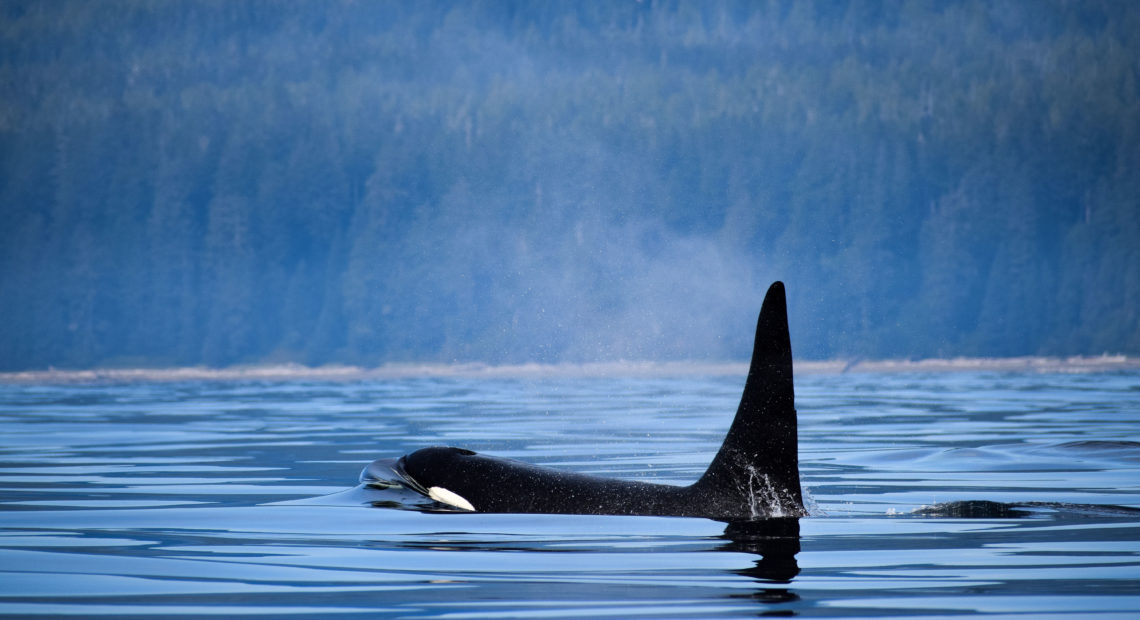
Canada Bans Keeping Whales And Dolphins In Captivity
PHOTO- An orca surfaces near Vancouver Island, Canada. The country’s Parliament has passed legislation banning the practice of breeding and holding dolphins, whales and porpoises in captivity. CREDIT: VW PICS/UNIVERSAL IMAGES GROUP/GETTY IMAGES
BY AMY HELD
Canada’s Parliament has passed legislation banning whales, dolphins and porpoises from being bred or held in captivity — a move that was hailed by animal rights activists.
Violations are punishable by fines of up to 200,000 Canadian dollars (about $150,000).
The bill contains some exceptions: Marine mammals already held will be allowed to remain in captivity. And the animals can be kept during rehabilitation from injury or for the purposes of licensed scientific research.
Animal rights activists, who have long argued that containing marine mammals and training them to entertain amounts to cruelty, celebrated the news, tweeting under the hashtags #EmptyTheTanks and #FreeWilly.
Former Sen. Wilfred Moore of Nova Scotia, who in 2015 as a senator introduced the measure, known as the Ending the Captivity of Whales and Dolphins Act, said in a statement from Humane Society International/Canada that phasing out the animals’ captivity was a “moral obligation.”
Canada’s Senate passed the measure last year, and the House of Commons voted to approve it on Monday. The legislation now goes through a process known as royal assent before it can become law.
The CBC reports that the measure “notably impacts Marineland, the Niagara Falls [Ontario] amusement park and zoo that is considered the last Canadian park committed to keeping cetaceans in captivity.”
Marineland has some 61 cetaceans, including “55 beluga whales, five bottlenose dolphins and one orca,” according to the CBC, citing data from Fisheries and Oceans Canada.
The park had initially opposed the ban, saying it would hurt attendance as well as conservation efforts. But in a statement Monday, Marineland said that its operations have been evolving since its founding in the 1960s and that it would comply with the legislation.
The Vancouver Aquarium bowed to public opposition last year and said it would no longer keep dolphins and whales for display. At the time, it had one dolphin in captivity.
“The public told us they believed the continuing importation and display of these intelligent and sociable mammals was unethical and incompatible with evolving public opinion and we amended our bylaws accordingly,” Vancouver Park Board Chair Stuart Mackinnon said in a statement.
In the U.S., SeaWorld Parks & Entertainment, which has SeaWorld parks in California, Florida and Texas, announced in 2016 that it would stop breeding captive killer whales and shift its focus to marine mammal rescue operations.
Three years earlier, the documentary Blackfish sparked a public outcry over the treatment of captive orcas. The film documented the killing of SeaWorld trainer Dawn Brancheau by an orca named Tilikum in 2010.
Nearly 60 orcas are in captivity at parks and aquariums worldwide. “A third of the world’s captive orcas are in the United States, and all but one of those live at SeaWorld’s three parks in Orlando, San Diego, and San Antonio,” National Geographic reports.
And while SeaWorld has shifted attention to other attractions, it has continued to put on dolphin shows, to the disapproval of People for the Ethical Treatment of Animals, a longtime critic. The animal rights group maintains that such displays can harm the animals.
SeaWorld’s vice president of animal health and welfare, Hendrik Nollens, recently defended the practice, saying the dolphins “are faster than us. They are stronger than us.”
“They are in charge. They choose,” Nollens said. “They decide whether to do the interaction or not.”
9(MDAyOTk4OTc0MDEyNzcxNDIzMTZjM2E3Zg004))















